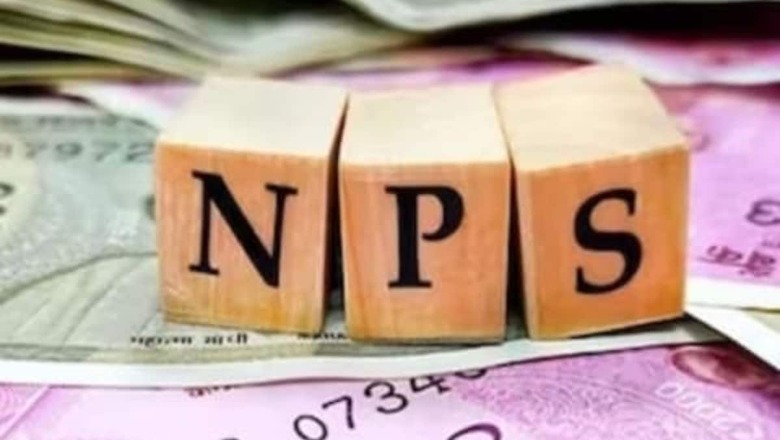
views
Are your pension funds safe with the National Pension System (NPS)? With 1.40 crore subscribers to the National Pension System that intends to replace multiple pension schemes in the country and provide a safe corpus of retirement funds to not only those who are in jobs but also who are self-employed, it is important to have a closer look at how your funds are getting invested by the NPS? Are they being done prudently so that people don’t lose the savings of their lives?
The Central government has put a robust mechanism in place by setting up the Pension Fund Regulatory and Development Authority of India, a body entrusted to regulate the NPS. Dr Deepak Mohanty, who took over as Chairman of the PFRDA has a reassuring answer to these questions.
Speaking to Network18, he said that there are multiple options for the investors in the NPS to ensure that they can invest according to their risk appetite. For example, you can choose a plan where you invest 25 per cent in equity and 75 per cent in debt instruments or you can choose a 50:50 option or a plan where investment in equity is 75 per cent and that in debt is 25 per cent. And then there is the life cycle fund.
“What happens in the life cycle fund is that after one attains the age of 35, the equity component is automatically tapered down,” he said.
According to Dr Mohanty, as far as the investment of NPS funds in equity is concerned, it isn’t a random investment in any kind of equity. “We periodically review the investment guidelines and the equity composition. It’s only in the top 200 scrips that the pension fund can invest in. As far as the corporate bond market is concerned, investments are made mostly in triple AAA-rated bonds, which are considered comparatively secure The NPS has, though adopted, a conservative approach in the portfolio management of those whose funds are invested through NPS, but the average rate of return turns out to be around 12.5 per cent. This ensures safety with a decent rate of growth of funds which is much higher than Saving or Fixed Deposits.”
Breaking it down further, Mohanty explains further in the context of the NPS, if you look at the Central government scheme, which is a composite scheme of equity and debt, it is giving an annual return of 9.46 per cent per year since inception. The State government scheme gives an annual return of 9.32 per cent per year. And if you’re looking at G-Secs, the government security scheme, it gives an annual return of 8.64 per cent. If it is a pure corporate bond, it’s slightly over 9 per cent.
“So, these are good returns if you look at the market interest rates, which are, which are there. So, obviously, these are very comparable returns that people get, and not taking undue, undue risk in the whole process,” added Mohanty.
Challenge of Financial Literacy
What about a common man who doesn’t have much financial literacy and isn’t aware of the equity, corporate bonds, debts etc? How does a common person make the right choice in the NPS to suit her or his needs?
Dr Mohanty said that though there are multiple choices, it’s reasonable to expect that even those who have some basic financial market can get confused and this is a real challenge in terms of onboarding people for the NPS. He said, in addition to financial literacy, pension literacy itself is low and that needs to be worked upon for which PFRDA has rolled out several campaigns along with various stakeholders in this process.
He further elaborated on how this challenge is being met, “If you’re coming through employer-employee relationships, your employer has chosen a particular scheme after due diligence. For example, somebody is coming from the government side, you know, there’s a composite scheme, whatever may be the logic that has been decided and settled on that matter. But for a common person, it becomes difficult. So, the option for them is the life cycle schemes where research has already been done on the risk-reward ratio and given the people’s age profile, they can get into that process.”
Meanwhile, PFRDA and the NPS Trust are running a sustained campaign for financial literacy, especially through banks which provide the ‘points of presence’. The points of presence are the frontline people in the bank who interact with customers to enroll them in the NPS.
“And we also have a scheme of retirement advisors. These advisors have to have basic minimum qualifications and they get that by passing an examination. They are then authorized to advise people to go for a suitable option in the NPS. “Through digital media also, we try to reach out to people. Through corporates also, we try to reach out to people where the NPS runs employee awareness programmes and these efforts are supported by the PFRDA.”
Cyber Security
With UPI being allowed to be used to deposit money in the NPS and a thrust on the use of digital platforms to expand the footprint, PFRDA is specifically focusing on the cyber security issues so that hapless customers aren’t duped by imposters. One of the key steps taken in this regard is an amendment of a rule according to which now a customer can have only one NPS account linked with one phone number. Earlier multiple accounts could be linked to a single phone number but that isn’t allowed now. In addition, regular monitoring is done of the standards adopted by the banks that operate these NPS accounts.
According to Dr Mohanty, “We have been working with the intermediaries on this issue continuously and are ensuring that the tech systems are continuously upgraded with the strongest possible cyber security measures.” He said that the customers are also being made aware continuously of the checks and balances they have to adopt to ensure that they don’t get duped by fake calls. They should check every time someone tells them that he or she is calling on behalf of PFRDA or NPS or the bank through which they are operating their NPS account.
The NPS reached the record level of Rs 10.84 lakh crore (as on 16 December 2023) in terms of managing assets under the NPS. Out of the total subscription under NPS of approximately 14 million, the penetration of NPS is 13 per cent in the corporate and 64 per cent in terms of the government employees. The self-employed professionals or individuals who do not belong to either of these categories constitute 23 per cent of the total NPS subscription base. The NPS was launched in 2004 for the Government sector and was then opened to all citizens in 2009 and to the corporates in 2011.
The PFRDA is working in this context with the objective of creating a safe, secure, and well-organised pension system that serves the old-age income needs of people on a sustainable basis.
The writer is an author and columnist and has written several books. His X handle is @ArunAnandLive. Views expressed in the above piece are personal and solely that of the author. They do not necessarily reflect News18’s views.

















Comments
0 comment